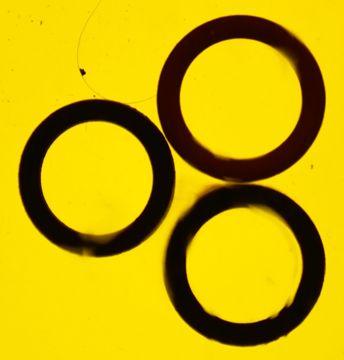Nice write up about o-rings.... Have you considered on looking into how much gasoline will lean the diesel motor out to much for catastrophic failure....?
Thanks, gungearz, other aspects of how much gasoline is too much in a normal diesel engine also involves energy content (BTUs), cetane, lubricity, specific gravity, viscosity.
energy content (BTUs):
Gasoline has on the average 10% energy per unit volume than diesel fuel; whereas, waste oils tend to have about 10% more energy per unit volume than diesel fuel; therefore, a blend of 50% gasoline to waste oil should have the same energy content per unit volume as diesel fuel has.
cetane
Cetane is the value that a fuel has that promotes diesel combustion. it is the inverse of octane rating, which is the suppression of diesel combustion. Gasoline does not have 0 cetane. It has octane enhancers added to it to reduce diesel combustion. I do not own a cetane, or octane testing device, so I will have to determine this by using my blends as a fuel.
Lubricity:
I plan to build a lubricity testers, but I believe it is reasonable to consider that a gasoline blend with waste oils, even up to 50% gasoline, should have at least the same lubricity as D2 diesel.
specific gravity
I have tested the specific gravity of blends of new canola oil and gasoline; and new 10-40 motor oil and gasoline, and found a 50-50 blend of either produces a blend with the same specific gravity as D2 diesel fuel.
viscosity
I have tested the viscosity of blends of new canola oil and gasoline; and new 10-40 motor oil and gasoline, and found a 50-50 blend of either produces a blend with the same viscosity as D2 diesel fuel.
However, it is reasonable to consider that a waste oil-gasoline blend containing gasoline at 50% might have sufficient cetane value for diesel combustion. I do know that waste oil-gasoline blend containing gasoline at 30% run like racing fuel in my old engine, so I am inclined to continue increasing gasoline in my blends, but I will first have to replace the silicone seals in my IP.
FANTASTIC info, thank you very much!! I'm glad that I replaced the O-rings with Viton ones in my Deuce engine's HH...I get old gas every now & then, but I try to keep it below 10% total concentration with my WMO/UMO blends for my Deuce.
With Viton o-rings, and no silicone o-rings, in your IP, then there is no reason why you could not run higher percentage of gasoline in your waste oil diesel blends. Also, what swells the silicone seals is the presence of alcohol in our oxygenated fuels. Stale gasoline is most likely going to have very little, if any, alcohol in the fuel.
When I was making "deuce juice" my mix for 100 gallons of fuel was 30 gals WMO, 30 gals WVO, 30 gallons straight diesel and 10 gallons of gas to thin it out. Worked well but you have to use it immediatly or it will try to settle out.
There is a definite problem with blending WVO with WMO, because there are lacquers and free carbon that are dissolved in the WMO that will precipitate out when WVO is blended with the WMO, and that lacquer is bad news. Click the link for a lengthy discussion and exploration of
Blending WMO with WVO Incompatibility
How many miles have you put on in 6 years. You still have the original IP it came with?
My odometer does not work, so I do not know how many miles I have driven in the last 6 years, but not a lot, because I often drive a company truck when I work.
I do not have the original IP, because when it first died I sent it off for a rebuild. However, I have four IPs now, 3 of which are dead, and at least one of them has a split silicone seal. Now that I know that silicone seals with swell significantly in fuel blends containing gasoline at or above 40%, then I plan to rebuild all three IPs and replace all of the silicone seals with viton if I can find them, or BUNA if not.
How cold have you ran with your blend? Thanks for sharing.
I have had not trouble starting my 6.2L Detroit Diesel engine without a block heater in temperatures at 0F (-18c) on a blend of 20% gasoline to 80% canola WVO.




